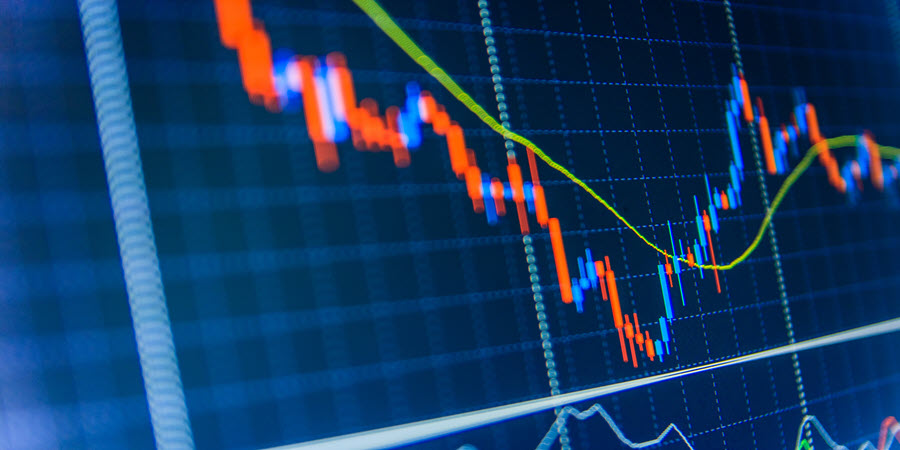by Harry Katica, Saut Strategy
Readers Note: I will be out fishing in the Gulf of Mexico on Friday, so this report was written a day early and without sector detail. I will be feeding my bad ideas to the fish.
It’s not a strategy suitable for everyone. Wait for a random Tweet while most US investors are asleep. Watch the market go down 500-1000 points from the open, like it has started to do lately. Hear the Talking Heads whip viewers into a panic, as stocks go into a virtual free fall. Late in the day, buy some beaten up trade names. Pray Mnuchin steals the President’s cell phone and Tweets that the Tariffs will be put off until fall. Sell after stocks jump 400 points.
[backc url='https://sendy.advisoranalyst.com/w/J8pxsj3OgR4yxKxsA1169Q']That paragraph was written before I sat down at my computer Wednesday morning and the S&P Futures were down another 26 points (0.9%). It’s hard to keep up with the computer algorithms, which can trade 24/7, work quietly without distractions, and don’t go away to eat lunch or use the bathroom. They seem to have endless capital and can rip the market to shreds in minutes.
It might be the best con job since Arnold Rothstein fixed the 1919 World Series. The exchanges have rigged the markets for their favorite participants, the high-frequency traders. With names like Citidel and Susquehanna, these algorithms, supposedly act as market makers in a Make It, Take It fashion, receiving a ½ penny or so to facilitate a trade.
That’s fine for the long-term investor, who is oblivious to the inner workings of the market and just wants to buy a low-cost ETF. The microscopic charge is barely noticeable. And all the other games played by market participants are meaningless to investors that buy 3 shares of SPY every month.
But try and buy fill a large mutual fund order and watch the rabbits hide in the bushes. Large institutions know the game well and employ their own algorithms to fool markets. Active traders like me, who are too old to learn the new trading tools, must invent other strategies, or die trying. It ain’t easy.
My sympathy goes out most to the analysts and portfolio managers at large institutions. It used to be my job to make stock recommendation to these folks. I would marvel at their knowledge, their access to managements, the information flow that they received from the large investment bankers and trading firms. Some seemed to have inside information. They were the Kings and Queens of Wall Street.
That all changed in the early 2000’s. Thanks to Enron, laws were passed, and new rules were written by the SEC, requiring company CEOs and CFO’s to certify financial statements and disseminate material information in a public manner. Whisper something to your favorite sell-side analyst, and you could end up spending the weekend at the Epstein Motel. As a result, guys like me become the last to know when something was going on instead of the first.
While it was still possible for buy-side analysts (working at a mutual fund) to do fundamental research, a lot of the edge has faded. Managements were no longer free with information. Betting on a quarter became dangerous. Annual returns trended down towards the benchmark. Hedge Funds, once the center of the universe for profit seeking MBA’s, closed shop one after another, unable to provide superior returns. Some morphed into algorithmic traders.
Matching wits with Ken Griffin at Citadel is a loser’s game. He has all the inside information. It’s not whispers from management. It’s price discovery. Those computers run every day looking for volume. Back in the day, specialists used their inside knowledge to emphasized profits. They would take a position, down from the last trade, and mark it up when the buyers appeared. At ½ penny per share, the goal today is more trades. Nothing shakes leaves off the tree more than an early morning tweet. Your only chance is to get there early.
Blue Chip Time
When I started writing this report on May 3, I hoped to tie my Sector & Industry comments together with individual stocks. My goal is to help investors create a useful framework for developing and adjusting strategies. That was hard to do for the past three months, as conflicting economic reports had investors looking at a slowdown one day and pick up the next. With valuations reflecting a more cautious economic outlook, it may be time to hunker down.
Now is Blue Chip time. When everything is going down at once, including the best large cap stories that rarely sell at discounts, it’s time to buy quality. Who knows, stocks could keep going down for a while. In those situations, quality franchises will eventually work their way back. They provide a dividend and can buy back stock. Buy some now, and on the next break down. Think of it as dollar cost averaging. Below are my 15 picks.
+ Consumer Staples – WMT (2.0%) provides broad exposure to everyday items, even with the better than earnings. If anyone can figure out the trade war, it’s the folks from Bentonville. CAG (2.9%) is packaged food company with a portfolio of supermarket brands.
+ Real Estate – O (3.9%) is a retail REIT, which offers broad exposure to strip shopping centers and acts like a long-term bond. Good for lower rates.
+ Utilities - DUK (4.2%) still offers a decent yield. Adding a Utility makes sense when you can pair it with a bank.
+ Financials – JPM (2.9%) has given back most of its 2019 gains. The world’s premier banking franchise is back in the middle of its two-year range. It’s a hedge in case rates go up.
+ Health Care – UNH (1.5%) is the class of the sector, though Washington has threatened its livelihood. As a result, the stock trade in the middle of its 2019 range. BMY (3.6%) adds diversification into Pharma.
+ Communication Services - DIS (1.2%) has returned to the level it launched its last uptrend. It provides broad exposure to US discretionary consumer.
+ Consumer Discretionary - HD (2.2% yield) should benefit from low rates, assuming they continue to spur re-financings and residential remodeling. RL (2.3%) is a high-quality apparel manufacturer caught up in the China mess.
+ Information Technology - TXN (2.5%) provides broad chip and 5G exposure.
+ Industrials – BA (2.1%) is facing an uphill battle to restore its reputation and its valuation. It’s not often the stock can be purchased at its 52-week low.
+ Transportation – UPS (3.6%) still has AMZN and its positioned generally for more home deliveries. Lower rates have historically lifted Air Freight.
+ Materials – LIN (1.9%) supplies Industrial Gases. This group has been one of the more stable in the sector.
+ Energy – HES (1.5%) offers exposure to the beleaguered oil industry with potential for an acquisition. The Permian would benefit from consolidation.
Epitaph – “The Bottom Dweller”
In fishing, they are called Grouper and Snapper. The prized fish lurk at the bottom of the ocean, hiding in the rocks, wrecks, and cut-offs beneath the Gulf of Mexico. Since I was a little boy on the docks of Clearwater Beach, I wanted to catch once of these monsters. Drop down a live sardine on their doorstep, and you could be in for the fight of your life. The fish win about half the battles.
Investors also call us Bottom Dwellers. Contrarians feed on the shreds of stock floating to the bottom, spit out by panic sellers. There is panic all over the street, and they can’t stomach the loss. Veteran traders can smell this fear and feel the pain. They watch for signs of exhaustion, a pause in the selling. Then dip a toe in the water and pick up and position or two, and they wait.
The market has been on shaky ground ever since Powell said “mid-year correction.” Does he not know that a massive dose of deflation could be around the corner if Europe and China go down the rabbit hole. The $ needs to go down fast – it’s too expensive too other countries. This game of chicken the President is playing with China may prove successful in the long-term, but right now it is invoking memories of Smoot, Hawley, and the Great Depressions. The bulls were about to break
Volatility was cranked up already when Trump tweeted more tariffs last Thursday. The market nosedived. Just three days later, on Tuesday, the tweet came that they were postponed. The market shot up. Only to fall again Wednesday after bad economic reports from China and Germany. Another rout was on as the S&P futures fell about 100 points overnight.
By the time of the US open at 9:30 am Wednesday, investors around the world feared a meltdown. It’s the knee-jerk reaction to assume the worst after getting punched in the stomach. The prospect of big losses is terrifying for everyone.
With the Dow Industrials down 600 points early Wednesday afternoon, I bought some Boeing (BA). The stock shed 60 points after reporting a lousy Q2 in mid- July. The bad news was everywhere. If there was a stock due for a dead cat bounce, it was BA.
There has not been one piece of good news for about six months. The world is headed toward recession. They can’t buy any stock or make any positive public comments, even though the DJIA desperately needs a reversal in the shares. Does the outlook get any bleaker than that?
It’s not my practice to throw away money, but I wanted to test a theory that’s been in development for two years. In my view, a selling stampede puts the emotions of the market to the ultimate test. Fundamentals take a back seat to fear. You never know how long they are going to last, but when they are done, there is often a technical rally.
It’s also helpful to have an idea why the market may reverse. The human nervous system can handle straight down for only so long. Everyone who is going to panic will often do so during the maximum descent (RSI). In this case, any puff piece about the economy, a comment from a Fed governor, or tweet about trade could trigger some short covering.
When the Dow fell another 200, I bought more BA. I know I shouldn’t chase things down, but. When it fell late in the day, I bought more. I intended to sell before the close, but lost track of time.
When I looked at the clock, my Adams Apple went into my throat and my heart sank. I would have to carry the position overnight. OMG. I could be down another 5-10% by the open. A loss like that would really rattle me. I took an aspirin and went to bed.
At the open Thursday morning, it looked like stocks might lift a little, until a wave of selling hit and BA steamed towards $320. That was the next round number, and it effectively represented the new 52-week low. If a stock was ever going to reverse on no news, it could be today with BA.
The stars seemed to line up perfectly. But a print below $320 might break me psychologically, and maybe even the whole market. I felt like throwing up. The pressure alone might force me to sell. I bought some more.
At 9:46 am, BA touched 319.34. I made God a few promises after it was all over if he could just make stocks go up. It was kind of like being seasick and vowing to never go again if you survive the trip. BA lifted, and it tested. It ran up, then fell back. By noon, it had reached $225. Exhausted and ready to write my letter, I sold (too early as usual). I had reversed a loss and made a small profit. Good thing the fishing trip was canceled due to Stormy Weather.
















